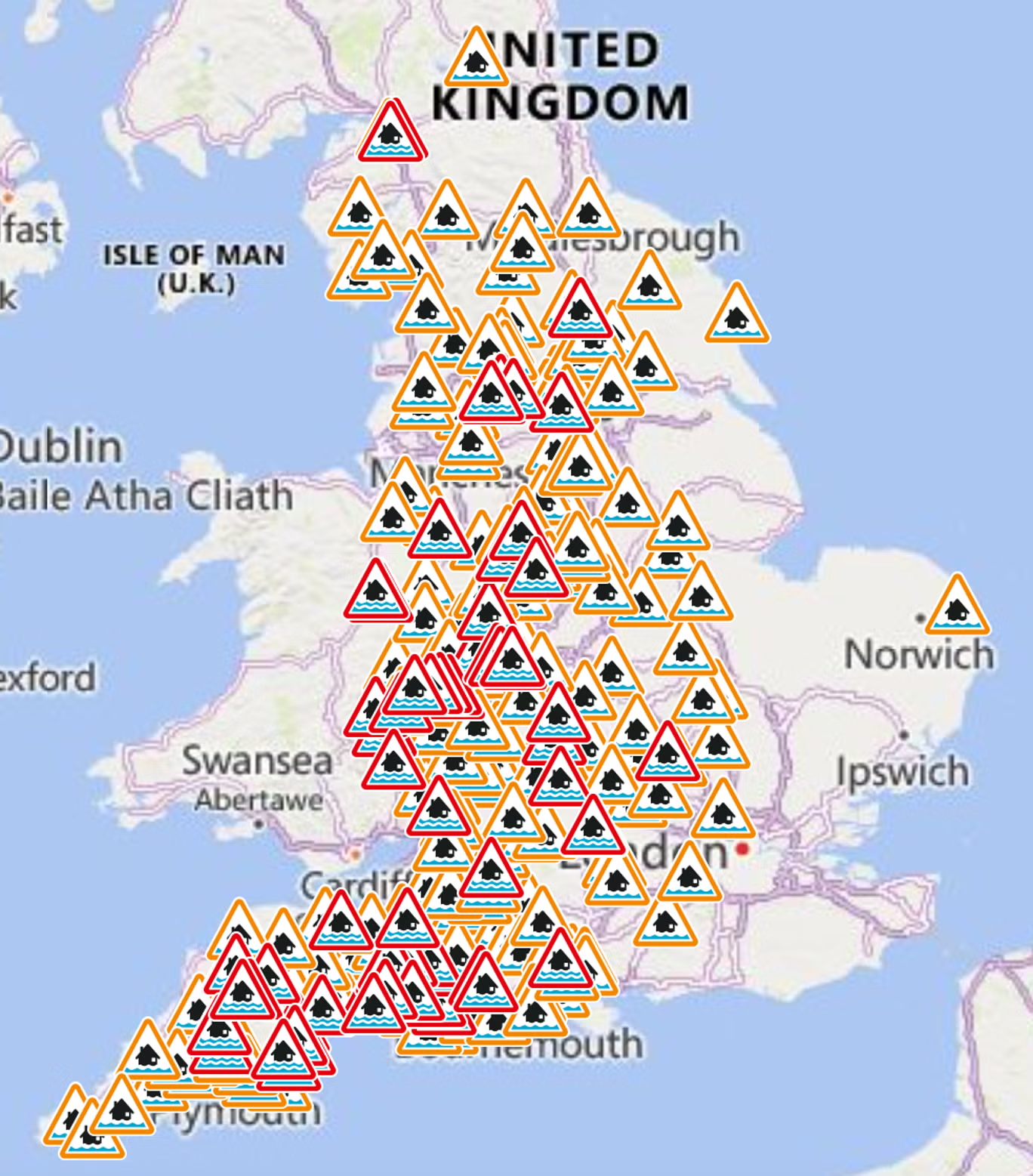Introduction
Storm Bert struck the UK in late November 2024, bringing a combination of heavy rainfall, strong winds, and localised snowfall. It caused significant disruption across the country, highlighting the challenges of managing extreme weather events in a changing climate. The impacts of Storm Bert were wide-ranging, affecting transport, infrastructure, and communities while sparking debates over flood preparedness and warnings.
Storm Bert was the second major storm of the 2024-25 season, following closely behind Storm Arwen, which also brought significant disruption earlier in the autumn.
Causes of Storm Bert
Storm Bert was caused by a complex weather system. A slow-moving low-pressure system over the Atlantic brought persistent rain and strong winds to the UK. A southerly airflow dragged warm, moist air from the tropical mid-Atlantic, resulting in unseasonably high temperatures in some areas, contrasting sharply with Arctic conditions earlier in the week. This clash of air masses intensified the storm, leading to prolonged rainfall and strong gusts, particularly in Wales and southwest England.
Impacts of Storm Bert
Social Impacts
- Fatalities: At least five people lost their lives due to storm-related incidents, including road traffic accidents and flooding.
- Flooded Homes: Hundreds of homes were inundated with floodwater, particularly in South Wales. Residents in areas like Pontypridd faced devastation, with some experiencing flooding for the second time since Storm Dennis in 2020.
- Evacuations: Landslides and rising floodwaters forced evacuations in places such as Blaenau Gwent and Powys, with families seeking refuge in emergency shelters.
- Boil Water Notice: Over 10 areas in Rhondda Cynon Taf were advised to boil water before use due to contamination from sediment washed into treatment plants.
Economic Impacts
- Transport Disruption:
- Major rail routes, including those linking London to Wales and the southwest, were closed due to flooding and fallen trees. Services to Gatwick and Stansted airports were also affected.
- Hundreds of flights were cancelled over the weekend, causing widespread travel chaos.
- Key roads, such as the M32 in Bristol and the A5 in Northamptonshire, were closed due to severe flooding.
- Business Losses: Local businesses suffered significant damage. In Crickhowell, Powys, a recently renovated pub was flooded, forcing closures and cancellations during a crucial trading period before Christmas.
- Infrastructure Damage: Bridges and flood defences constructed after Storm Dennis were damaged or destroyed, highlighting the storm’s intensity.
Environmental Impacts
- Flooding and Erosion: Rivers burst their banks across England and Wales, leading to extensive flooding. Landslides in areas like Torfaen and Blaenau Gwent caused additional destruction.
- Power Outages: Approximately 15,000 homes lost power during the storm, some for prolonged periods.
- Ecosystem Disruption: Flooding and sediment runoff impacted local ecosystems, particularly in riverine environments.
Did you know?
The Met Office works in partnership with Met Éireann (the Irish Met Office) and KNMI (The Dutch National Weather Forecasting Service) to name storms. Find out more.
Management Strategies
Before the Storm
- Weather Warnings: The Met Office issued yellow warnings, but these were criticised as inadequate for the severity of the storm. Residents in South Wales argued that an amber or red warning would have allowed better preparation.
- Flood warnings: The Environment Agency issued 76 flood warnings in England – meaning flooding is expected – and a further 193 flood alerts, which warn that it is possible.
Storm Bert flood warnings issued by the Environment Agency
- Flood Defences: The Environment Agency deployed temporary flood defences in several high-risk areas to mitigate the impact of the storm. For example:
- Temporary Barriers in Somerset Levels: Mobile aluminium flood barriers were set up along sections of the River Tone and River Parrett. These barriers were designed to hold back rising waters and prevent flooding in vulnerable communities.
- Defensive Measures in Pontypridd: Temporary flood defences, including water-filled barriers, were placed at strategic points near the River Taff to protect low-lying areas of the town.
- Barriers and Pumps in Blaenau Gwent: Temporary flood gates and portable pumps were deployed to manage water flow in areas prone to surface water flooding.
These defences provided short-term protection and allowed emergency responders more time to support residents and businesses in flood-threatened areas.
- Natural Flood Management in Brecon Beacons: Reforestation projects and “leaky dams” upstream were designed to slow water flow into lowland areas. Although these measures reduced the speed of river rise in some areas, the unprecedented rainfall overwhelmed the systems, particularly in the Brecon Beacons National Park.
During the Storm
- Emergency Services: Firefighters evacuated families in Blaenau Gwent using inflatable rafts and cleared debris from landslides blocking major routes like the A5. Pumps were used in Pontypridd to redirect water from streets back into the River Taff.
- Community Response: In Rhondda Cynon Taf, residents distributed thousands of sandbags, and local volunteers used water vacuums to remove water from homes. In Powys, temporary aluminium flood barriers were erected to contain rising waters.
After the Storm
- Clean-Up Operations: In Blaenau Gwent, roads such as the Glenshesk Road were cleared of landslide debris, and temporary barriers were installed to prevent further damage.
- Investigations: Natural Resources Wales reviewed river level sensors and flood alert systems to improve future response times.
- Calls for Investment: In Crickhowell and Pontypridd, local leaders advocated for the expansion of floodplains and the installation of high-capacity storm drainage systems to cope with increasingly frequent extreme weather events.
Lessons Learned
Storm Bert underscored the increasing vulnerability of the UK to extreme weather events. While flood defences and emergency response measures helped mitigate some impacts, the storm exposed gaps in preparedness and highlighted the need for more robust warning systems and infrastructure. As the climate continues to change, events like Storm Bert are likely to become more frequent, necessitating a coordinated national strategy to adapt to these challenges.
Conclusion
Storm Bert will be remembered as a stark reminder of the power of extreme weather. Its social, economic, and environmental impacts demonstrate the urgent need for investment in resilience and adaptation strategies to protect communities from the growing threat of such events.


